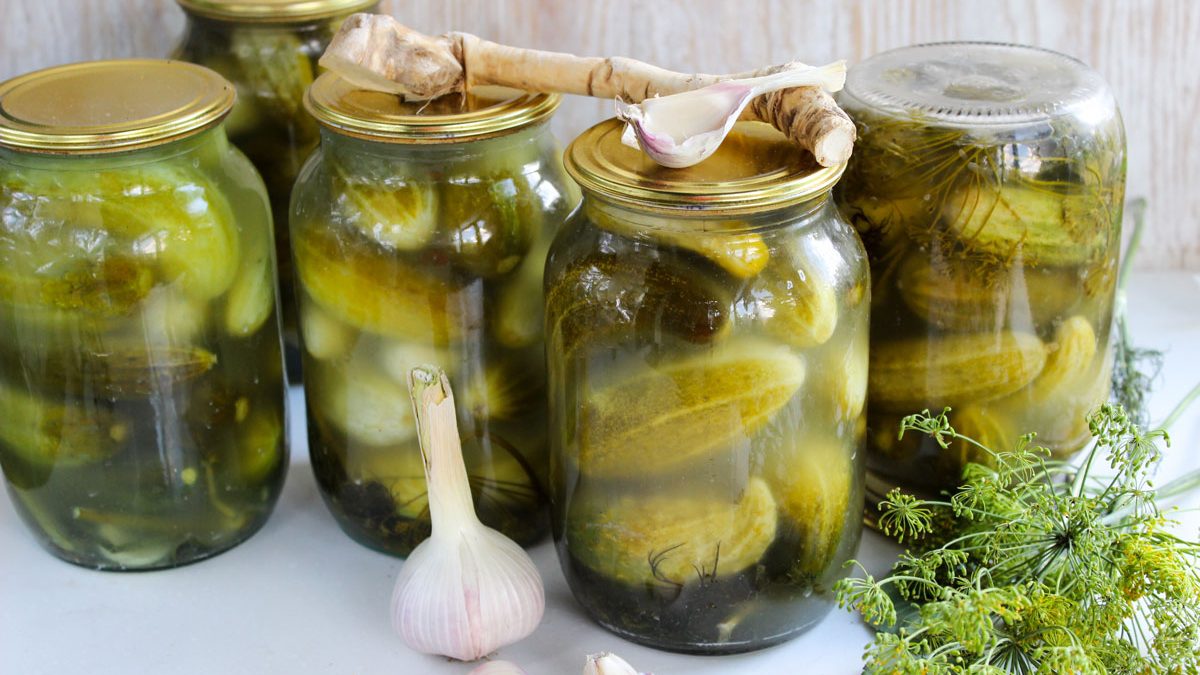How to salt cucumbers for the winter so that they are dense and crispy? How to correctly calculate the proportions for a 1-liter jar? Write down the recipe – today we will pickle cucumbers for the winter without vinegar, and in a small container, which is especially convenient for urban conditions, if there is no cellar and other conditions for storing home preservation.
Cucumbers according to this recipe are salty and crispy, like barrel ones. They ferment for 2 days at room temperature. Then the brine needs to be drained, boiled and poured back into the jars – it remains to roll it up turnkey and wait for winter! It can be served as an appetizer, as well as used to make pickle and all kinds of salads. To taste, they are like ordinary pickled barrel cucumbers – indistinguishable!
Ingredients:
- Small cucumbers – 500-700 g (how much will go into the jar).
- Dill – 1-2 umbrellas with seeds and stem.
- Horseradish – 1/3 leaf + small root circle 0.3 cm.
- Garlic – 1 large clove.
- Cherry – 2 leaves.
- Non- iodized salt – 30 g.
- Hot water from a kettle – about 300-400 ml (how much will go into a jar).
How to cook:
1. Rinse the cucumbers, pour them into a basin or other container with clean cold water and leave for 3-4 hours. During this time, they will absorb some of the liquid, which means they will be crispy and dense. Pay attention to the size of vegetables: since we will use a container of small displacement, then choose medium-sized or small cucumbers so that as many as possible fit into a 1-liter jar.
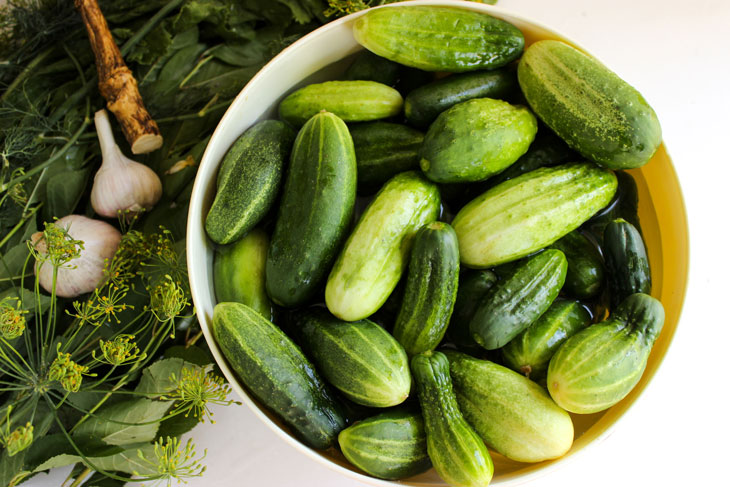
2. Rinse the jars with baking soda, they do not need to be sterilized. Place a set of spices on the bottom of each: a dill umbrella, horseradish (a leaf and a piece of root), a clove of garlic (cut into 3 parts), a cherry leaf.
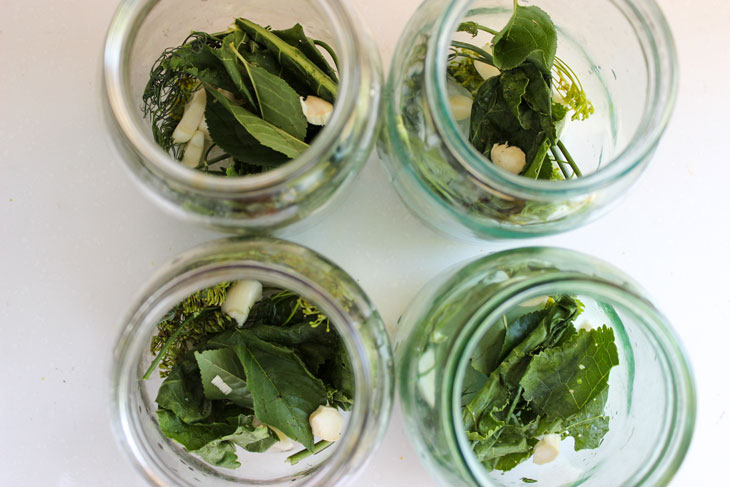
3. Pack cucumbers tightly on top.
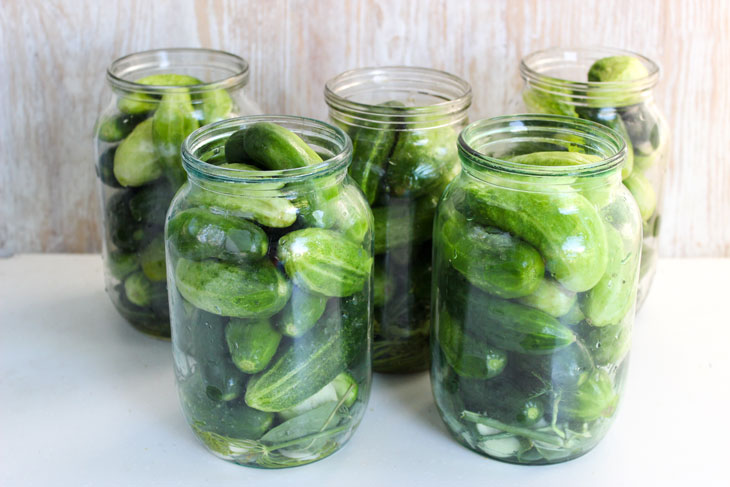
4. Sprinkle with salt (coarse, coarse, non-iodized). The amount of salt is exactly 30 g for each 1 liter jar of cucumbers. Use a kitchen scale to measure, you can’t go wrong!
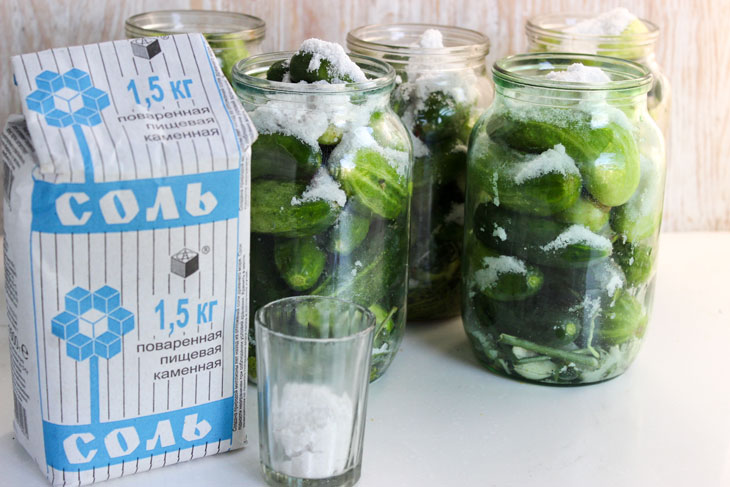
5. Fill with hot boiled water – straight from the kettle. To prevent the glass from cracking, place a knife blade under the bottom of the jar.
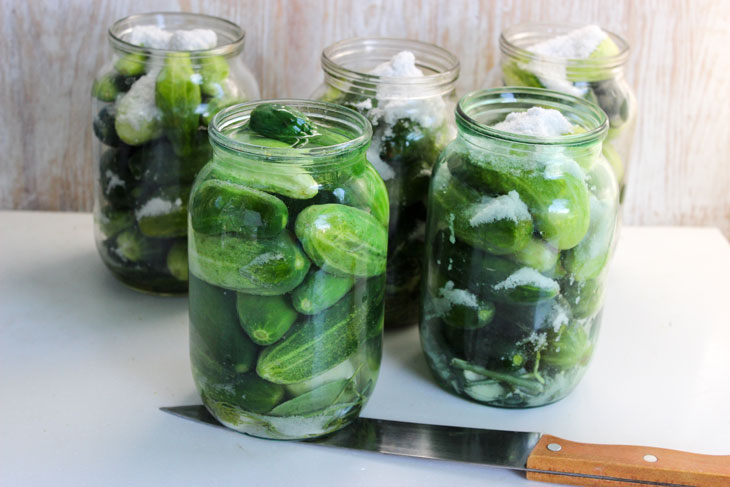
6. Cover the top of the jars with clean gauze, folded in half, and then fix with elastic bands so that air can circulate freely and insects do not get inside. Place the jars in a basin or bowl for brine, which will drain from the jars during fermentation. In this form, leave for 2 days at room temperature (but not longer, otherwise they will peroxide !!!).
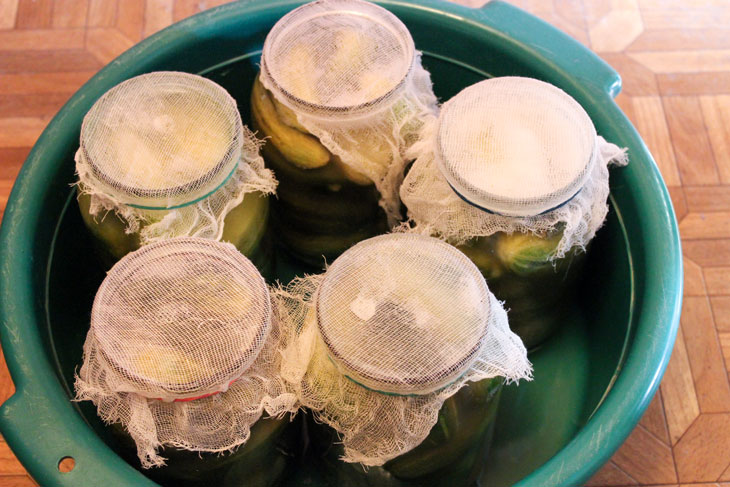
7. After 2 days, drain the brine from the jars into the pan. Add about 250-300 ml of pure water (based on 5 cans of 1 liter each), as well as 1-2 pinches of salt – this topping up must be done, since part of the brine has already flowed out of the cans during fermentation, something will boil away, spill and leave with the foam that you skim off. Boil the brine for 2-3 minutes, remove all the foam from the surface! And fill the cucumbers in jars with boiling brine – fill up to the very neck. Roll up turnkey lids (tin, they must first be boiled).
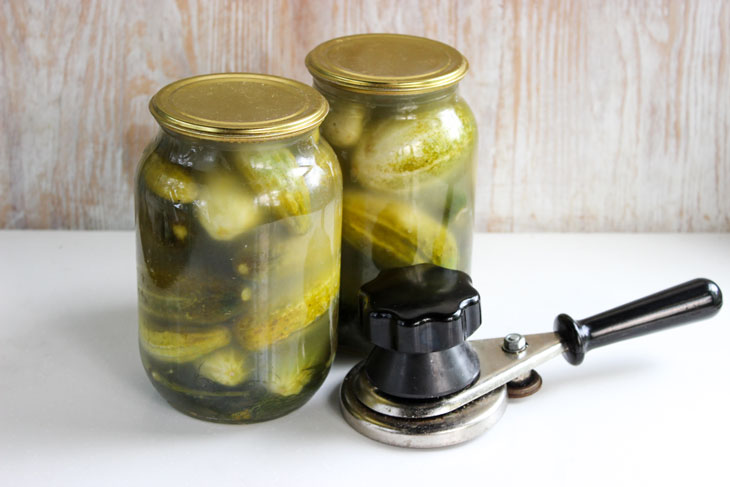
8. Leave the banks to cool. You do not need to turn them over or wrap them. When cool, store in a cool place. In the cold, the ripening process will finally stop and the cucumbers will gradually reach the desired condition. You can take the first sample after 2-3 months. Happy winter, friends!
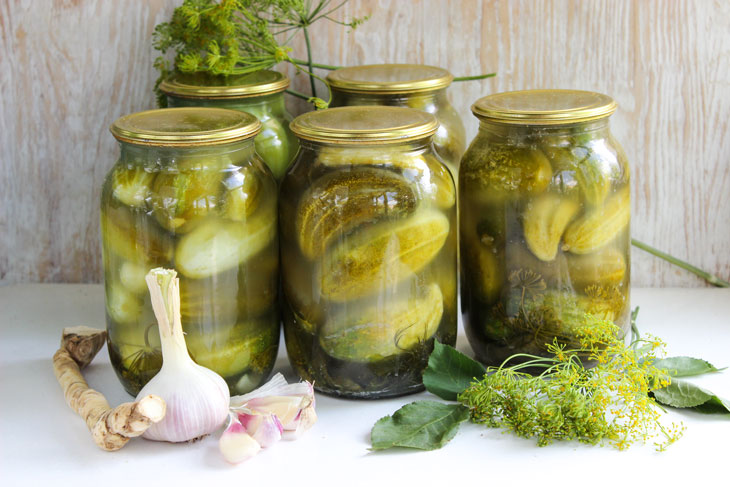
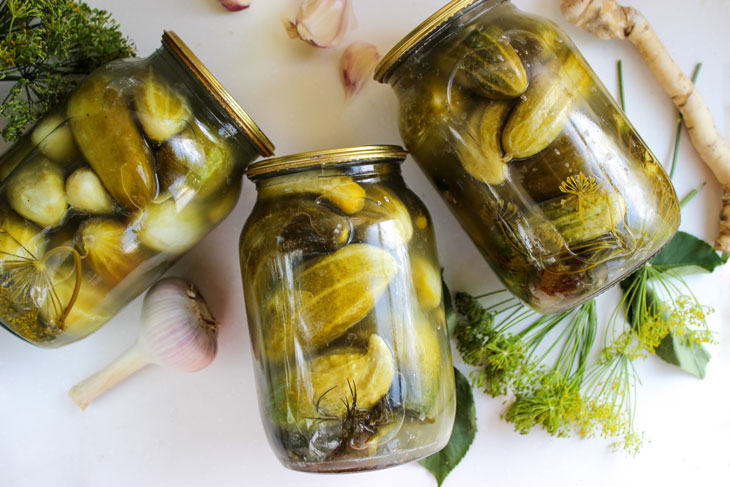
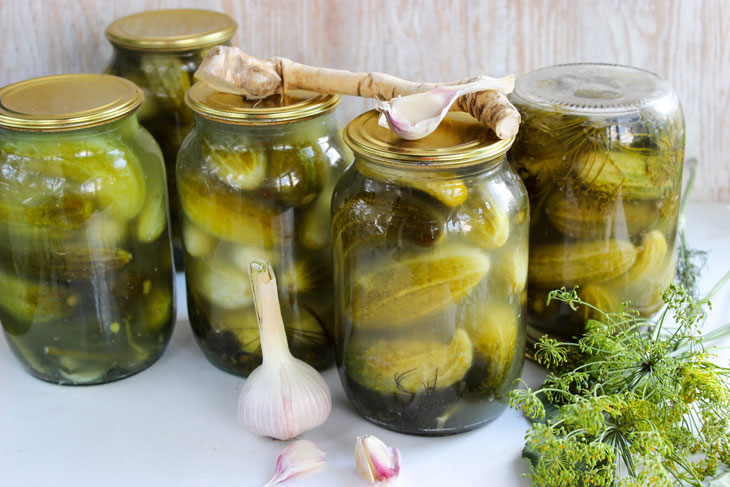
Enjoy your meal!
